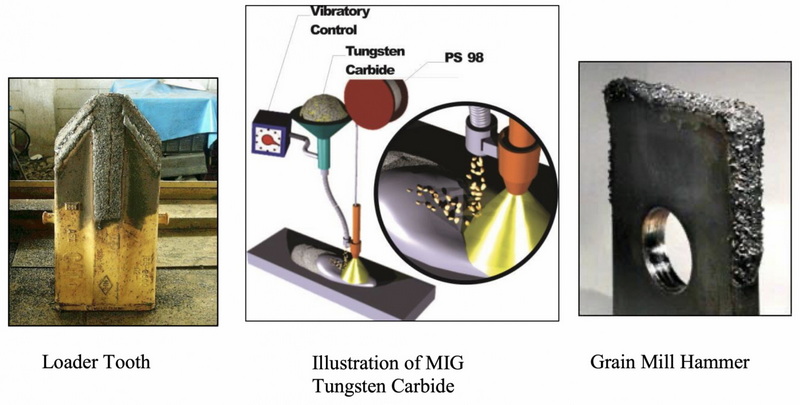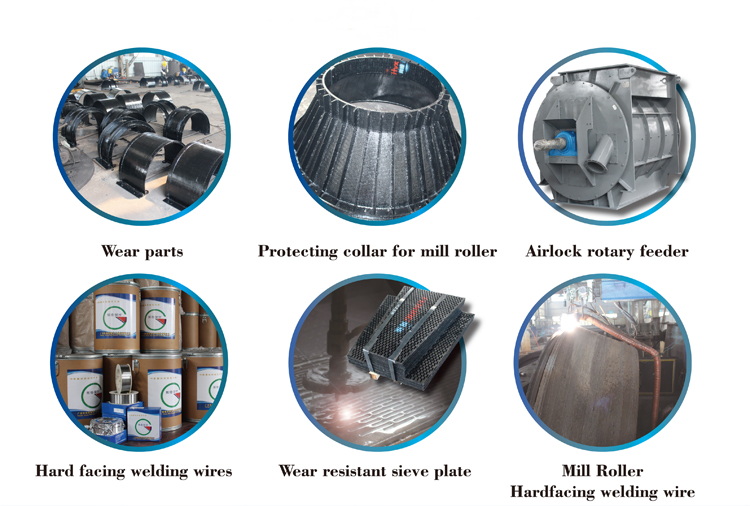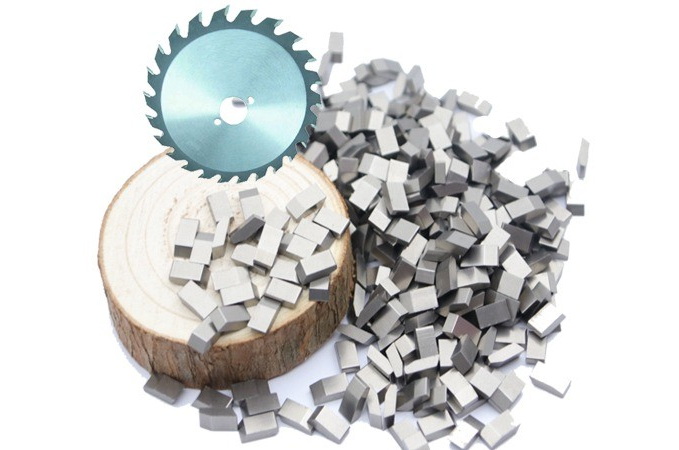Content Menu
● Introduction
● The Chemistry Behind Calcium Carbide and Water Reaction
● Advantages of Using Calcium Carbide and Water Products for Welding
● Limitations and Challenges
● Safety Considerations
>> 1. Acetylene Production
>> 2. Carbide Lamps
>> 4. Steelmaking
>> 5. Fertilizer Production
● Innovations in Calcium Carbide and Water Products
● Environmental Considerations
● Future Outlook
● Conclusion
● FAQ
>> 1. Is it legal to use calcium carbide and water for welding?
>> 2. How does the quality of welds made with calcium carbide and water compare to traditional welding methods?
>> 3. What safety precautions should be taken when handling calcium carbide and water products?
>> 4. Can calcium carbide and water products be used in other industrial applications besides welding?
>> 5. What are the environmental impacts of using calcium carbide and water products?
● Citations:
Introduction
Calcium carbide and water have long been known to produce acetylene gas, a highly flammable compound used in various industrial applications. This chemical reaction has led to the question: Can calcium carbide and water be used for welding? In this article, we will explore the potential of these two substances in welding applications, their advantages, limitations, and safety considerations. We will also discuss the broader context of calcium carbide and water products in various industries.

The Chemistry Behind Calcium Carbide and Water Reaction
Calcium carbide (CaC2) is a chemical compound that reacts vigorously with water to produce acetylene gas (C2H2) and calcium hydroxide (Ca(OH)2). The chemical equation for this reaction is:
CaC2 + 2H2O → C2H2 + Ca(OH)2
This exothermic reaction generates heat and produces a flammable gas, which is the basis for its potential use in welding applications[1].
Acetylene welding, also known as oxy-acetylene welding, is a well-established technique that uses the heat from burning acetylene gas to melt and join metals. This process typically involves a separate acetylene generator or pressurized cylinders, rather than direct use of calcium carbide and water[2].
While the direct use of calcium carbide and water for welding is not a standard industry practice, it has been explored in some contexts, particularly in emergency situations or in resource-constrained environments. The process involves:
1. Mixing calcium carbide with water in a controlled manner
2. Collecting the generated acetylene gas
3. Using the gas as a fuel source for welding
However, this method presents several challenges and safety concerns that limit its widespread adoption.
Advantages of Using Calcium Carbide and Water Products for Welding
1. Accessibility: Calcium carbide is relatively easy to store and transport, making it potentially useful in remote locations where traditional welding gases may be unavailable.
2. Cost-effectiveness: In some regions, calcium carbide may be more economical than purchasing pressurized acetylene cylinders.
3. Versatility: The acetylene produced can be used for both welding and cutting operations.
4. On-demand gas production: Gas can be generated as needed, reducing the need for large gas storage facilities.
Limitations and Challenges
1. Safety concerns: The reaction between calcium carbide and water is highly exothermic and can be dangerous if not properly controlled.
2. Inconsistent gas production: Maintaining a steady supply of acetylene for welding can be challenging with this method.
3. Impurities: The gas produced may contain impurities that can affect weld quality.
4. Regulatory issues: Many jurisdictions have strict regulations regarding the handling and use of calcium carbide and acetylene generation.
5. Limited flame control: Achieving precise flame control, which is crucial for high-quality welding, can be difficult with this method.
Safety Considerations
When working with calcium carbide and water products for welding or any other application, safety should be the top priority. Some key safety considerations include:
- Proper storage of calcium carbide in dry, well-ventilated areas
- Use of appropriate personal protective equipment (PPE)
- Adequate ventilation when generating and using acetylene gas
- Proper disposal of calcium hydroxide byproduct
- Regular maintenance and inspection of all equipment
While the direct use of calcium carbide and water for welding may be limited, these products have numerous other applications across various industries:
1. Acetylene Production
The primary use of calcium carbide and water products is in the commercial production of acetylene gas. This gas is used not only in welding but also in the manufacture of various chemicals and plastics[3].
2. Carbide Lamps
Calcium carbide and water have been historically used in carbide lamps, which produce light through the controlled production and burning of acetylene gas. These lamps were once common in mining and caving operations.
In some regions, calcium carbide is used as an artificial ripening agent for fruits. The acetylene produced acts similarly to ethylene, a natural plant hormone that induces ripening.
4. Steelmaking
Calcium carbide plays a crucial role in the steelmaking industry. It is used for desulfurization of iron and as a deoxidizer in ladle treatment facilities[7].
5. Fertilizer Production
Calcium carbide is used in the production of calcium cyanamide, which serves as a fertilizer and soil conditioner in agriculture[10].

Innovations in Calcium Carbide and Water Products
Research and development efforts continue to explore new applications and improvements for calcium carbide and water products. Some areas of innovation include:
1. Enhanced safety mechanisms: Development of safer methods for handling and using calcium carbide in various applications.
2. Improved purity: Techniques for producing higher-purity acetylene gas from calcium carbide and water reactions.
3. Sustainable production: Exploration of more environmentally friendly methods for producing calcium carbide.
4. Novel applications: Investigation of new uses for calcium carbide and its derivatives in emerging industries.
Environmental Considerations
The production and use of calcium carbide and water products have environmental implications that must be considered:
- Energy consumption: The production of calcium carbide is energy-intensive.
- Waste management: Proper disposal of byproducts, particularly calcium hydroxide, is essential.
- Emissions: The burning of acetylene produces carbon dioxide, contributing to greenhouse gas emissions.
Efforts are being made to address these concerns through improved production methods and more efficient use of calcium carbide and water products.
Future Outlook
While the direct use of calcium carbide and water for welding may remain limited, the broader applications of calcium carbide and water products continue to evolve. As industries strive for more efficient and sustainable practices, we can expect to see:
- Continued research into safer and more efficient acetylene production methods
- Exploration of new applications in emerging technologies
- Development of more environmentally friendly alternatives to traditional calcium carbide production
Conclusion
In conclusion, while calcium carbide and water can theoretically be used for welding through the production of acetylene gas, this method is not widely adopted due to safety concerns, practical limitations, and regulatory issues. However, calcium carbide and water products continue to play significant roles in various industries, from acetylene production to steelmaking and agriculture.
As technology advances and environmental concerns grow, the future of calcium carbide and water products will likely involve innovations aimed at enhancing safety, improving efficiency, and reducing environmental impact. While direct welding applications may be limited, the versatility of these products ensures their continued importance in industrial processes and potential for new applications in the future.

FAQ
1. Is it legal to use calcium carbide and water for welding?
The legality of using calcium carbide and water for welding varies by jurisdiction. In many countries, strict regulations govern the handling and use of calcium carbide and acetylene generation. It's essential to check local laws and regulations before attempting to use this method.
2. How does the quality of welds made with calcium carbide and water compare to traditional welding methods?
Welds made using directly generated acetylene from calcium carbide and water are generally of lower quality compared to those made with traditional welding methods. The inconsistent gas production and potential impurities can lead to less precise and potentially weaker welds.
3. What safety precautions should be taken when handling calcium carbide and water products?
When handling calcium carbide and water products, key safety precautions include:
- Storing calcium carbide in dry, well-ventilated areas
- Using appropriate personal protective equipment (PPE)
- Ensuring adequate ventilation when generating and using acetylene gas
- Properly disposing of calcium hydroxide byproduct
- Regularly maintaining and inspecting all equipment
4. Can calcium carbide and water products be used in other industrial applications besides welding?
Yes, calcium carbide and water products have numerous industrial applications beyond welding. These include acetylene production for chemical manufacturing, use in carbide lamps, fruit ripening, steelmaking processes, and fertilizer production.
5. What are the environmental impacts of using calcium carbide and water products?
The environmental impacts of calcium carbide and water products include:
- High energy consumption in calcium carbide production
- Waste management challenges, particularly with calcium hydroxide byproduct
- Carbon dioxide emissions from acetylene combustion
Efforts are ongoing to mitigate these impacts through improved production methods and more efficient use of these products.
Citations:
[1] https://sciencing.com/how-to-make-calcium-carbide-12081069.html
[2] https://www.tjtywh.com/a-the-advantages-of-welding-with-calcium-carbide.html
[3] https://www.tjtywh.com/a-understanding-the-process-of-welding-calcium-carbide.html
[4] https://commons.wikimedia.org/wiki/Category:Calcium_carbide
[5] https://www.vedantu.com/chemistry/calcium-carbide
[6] https://patents.google.com/patent/US4477278A/en
[7] https://www.alzchem.com/en/company/news/calcium-carbide-all-rounder-secondary-metallurgy/
[8] https://www.researchandmarkets.com/report/calcium-carbide
[9] https://en.wikipedia.org/wiki/Calcium_carbide
[10] https://www.tjtywh.com/t-welding-calcium-carbide-things-you-may-want-to-know.html
[11] https://www.instructables.com/Homemade-Gas-Welding-Torch/
[12] https://byjus.com/question-answer/action-of-water-on-calcium-carbide-cac2-is-used-for-the-preparation-of-acetylene-gas/
[13] https://www.acs.org/education/whatischemistry/landmarks/calciumcarbideacetylene.html
[14] https://www.fortunebusinessinsights.com/blog/calcium-carbide-market-9577
[15] https://app.aws.org/forum/topic_show.pl?tid=20241
[16] https://www.dncr.nc.gov/blog/2016/05/02/discovery-calcium-carbide-process
[17] https://www.thebusinessresearchcompany.com/report/calcium-carbide-global-market-report
[18] https://www.csb.gov/file.aspx?DocumentId=5665
[19] https://steadyhq.com/en/market-research-reports/posts/b6430453-51c2-4c38-83da-549d0fc634df
[20] https://www.alzchem.com/en/brands/calcium-carbide/
[21] http://www.crecompany.com/company_news_en/Calcium_Carbide31.html
[22] https://safetyculture.com/topics/welding-safety/gas-welding/
[23] https://www.alamy.com/stock-photo/acetylene-gas-welding.html
[24] https://www.uti.edu/blog/welding/oxy-acetylene-welding
[25] https://fractory.com/gas-welding-explained/
[26] https://www.twi-global.com/technical-knowledge/job-knowledge/oxy-fuel-welding-003
[27] https://www.twi-global.com/technical-knowledge/job-knowledge/health-safety-and-accident-prevention-oxyacetylene-welding-cutting-and-heating-027
[28] https://patents.google.com/patent/US661549A/en
[29] https://melscience.com/US-en/articles/chemical-characteristics-calcium-carbide-and-its-r/
[30] https://www.spglobal.com/commodityinsights/en/ci/products/calcium-carbide-chemical-economics-handbook.html
[31] https://www.alibaba.com/showroom/gas-welding-calcium-carbide.html
[32] https://www.britannica.com/science/calcium/Compounds
[33] https://www.britannica.com/science/calcium-carbide
[34] https://www.mordorintelligence.com/industry-reports/calcium-carbide-market
[35] https://phys.org/news/2015-08-abandoned-molecule-calcium-carbide.html
[36] https://byjus.com/chemistry/calcium-carbide/
[37] https://westliberty.edu/health-and-safety/files/2010/02/Calcium-Carbide.pdf
[38] https://pmc.ncbi.nlm.nih.gov/articles/PMC8840007/
[39] https://www.sciencing.com/how-to-make-calcium-carbide-12081069/
[40] https://patents.google.com/patent/CN102358848A/en
[41] https://www.epa.gov/sites/default/files/2020-10/documents/c11s04.pdf
[42] https://iitpkd.ac.in/facilities/oxy-acetylene-gas-welding
[43] https://www3.epa.gov/ttn/chief/ap42/ch11/final/c11s04.pdf
[44] https://technologystudent.com/equip_flsh/acet1.html
[45] https://patents.google.com/patent/EP0047856B1/en
[46] https://www.youtube.com/watch?v=-SA4D098u-Q
[47] https://www.youtube.com/watch?v=W5Zwlu-A0wI
[48] https://typeset.io/questions/what-are-the-uses-of-calcium-carbide-1n7a53mugv
[49] https://patents.google.com/patent/US4301133A/en
[50] https://pmc.ncbi.nlm.nih.gov/articles/PMC10023683/
















